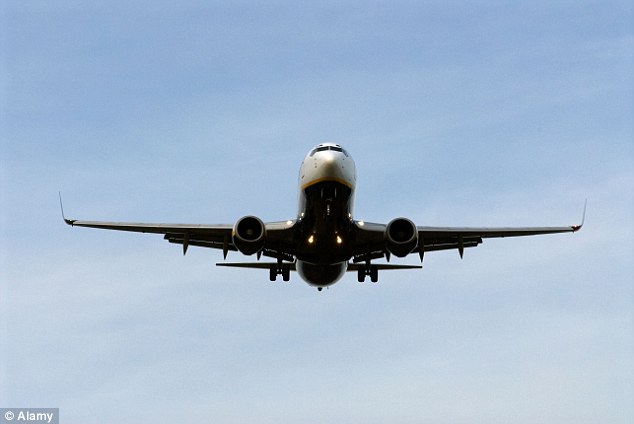
The Government has ordered Public Health England to conduct an 'urgent' investigation into the repercussions of increased radiation caused by a huge explosion of high energy particles from the surface of the sun.
This comes as a report into the UK's Space Weather Preparedness outlines what needs to be done to cope with a major burst of 'space weather.'
The document produced by the Department of Business, Innovation and Skills (BIS) states: 'The direct impact on public health from the increased radiation environment, which is most likely to affect the general public if they are travelling by air on trans-oceanic routes during the storm, is assessed to be small.
'However, the work on this area being led by Public Health England needs to be completed urgently.
'That will lead to a report that sets out recommendations for protecting public health from solar radiation.'
However, there are no radiation monitors on board most aircraft and it would not be possible to advise passengers and air crews exposure.
Data from satelites combined with that from ground level monitoring could be used to estimate the dose, but the report states this would take time to calculate.
'Both the monitoring of ground level radiation events and radiation at flight altitude is being considered through the development of a Public Health England report to advice on measures for protecting public health from radiation hazards during an extreme space weather event.'
Adrian Melott, a professor of physics and astronomy at the University of Kansas, told the Telegraph that neutrons which don't reach the ground do reach aircraft altitude.
'Flight crews get a greater radiation dose from neutrons,' he told the newspaper.
'In fact, during solar particle events, aeroplanes are diverted away from the North Pole, where a lot more cosmic rays come down.'
The report says that a massive solar phenomenon would disrupt transport networks, cause blackouts and disrupt satellites.
In the worst case scenario the report fears that humanity could have just 12 hours warning before the storm hits.
There have been a number of recorded severe space weather events over the last two centuries.
The last major coronal mass ejection to hit the Earth, known as the Carrington event, was a powerful geomagnetic solar storm in 1859 and is thought to have been the biggest in 500 years.
At the time technology was still relatively underdeveloped, although Telegraph systems all over the world failed and pylons threw sparks.
A large solar flare in March this year knocked out radio transmissions in some parts of the world.



A explosion?? Try numerous explosions, many explosions. I think their Geoengineering has weakened the magnetic field that protects people, thus making them more susceptible to extra earth effects. All in the presuit of profit and power.